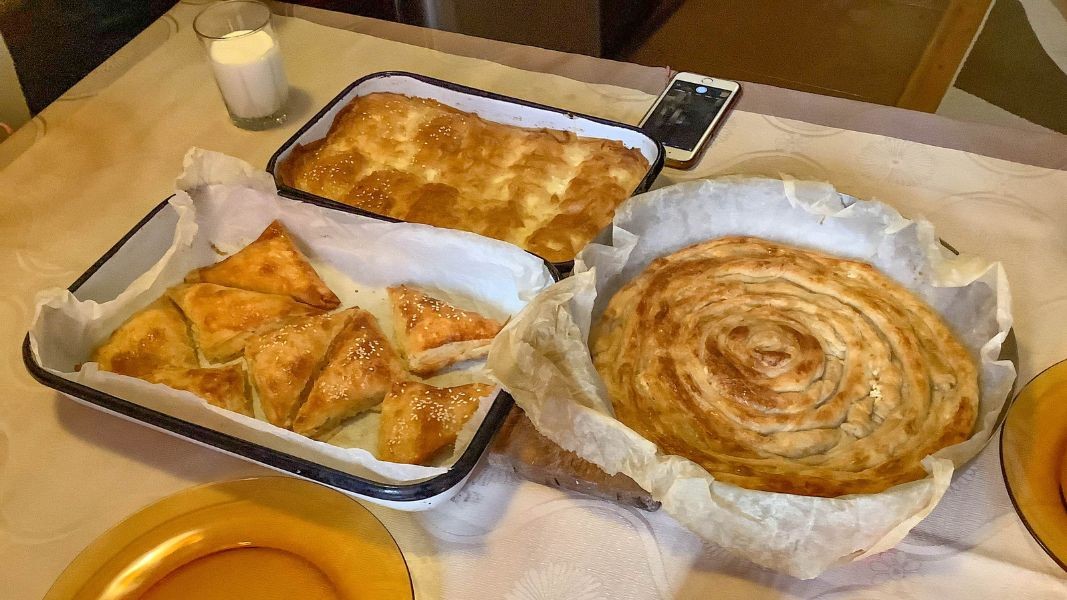A Japanese woman traveled 13,000 kilometers to visit Plovdiv and learn how to make ... banitsa (Bulgarian cheese pie). Makiko Miura is a producer of Bulgarian lyutenitsa (red pepper and tomato chutney) in the Japanese prefecture of Yamagata, where the made-in-Japan delicacy arouses mass curiosity and increasingly appears on the table of her compatriots.

Makiko claims to have drawn inspiration from Bulgarian rhythmic gymnast Antoaneta Vitale. During the coronavirus pandemic our compatriot lived in Japan, where she promoted Bulgarian sports and cuisine in the local media. Makiko contacted her and received valuable tips on how to prepare authentic Bulgarian lyutenitsa. 3 years later, Makiko visited her in Plovdiv, in order to learn how to make banitsa. She admits that she fell in love with the Bulgarian pastry dish at first sight, without even tasting it.
"It happened while I was watching a TV show. Japan’s national public broadcaster NHK presented your lyutenitsa and banitsa. I had never tried banitsa before, but I was very intrigued, as happened with your lyutenitsa some time ago. Therefore, I wanted to come here and try some banitsa and learn how to make it myself. I would like to introduce your banitsa to the Japanese people, but I don't know whether I will find Bulgarian cheese and filo pastry on our market. Not to mention that even the Japanese flour is different! I'll have to tailor it to the Japanese taste, like I did with your pepper and tomato chutney", Makiko concludes.

The first thing she did when she arrived in Plovdiv was to go to a supermarket. She was impressed by the wide variety of pepper and tomato chutneys on the stands. Next, she bought a banitsa from a street shop. She said that it was salty and sharp at the first bite, because of the cheese. Later, she rolled up her sleeves and tried to make the Bulgarian delicacy in Antoaneta Vitale’s home.

''I welcomed her and we had a wonderful four-day cultural exchange, because she came home and cooked us sushi one day. Otherwise, we made banitsa - says Antoaneta. - I wanted to show her how to make homemade banitsa with ready-made filo pastry and separately – banitsa with homemade pastry using a rolling pin, which is not so easy. I thought Makiko wouldn't be able to find ready-made filo pastry in Japan and she'd better make it herself. We made banitsa topped with with egg, yoghurt and sparkling water, but we also made a type of banitsa that is sold in bakeries. The idea was to teach Makiko how to prepare different types of banitsa in Japan, where there is a great interest in all things Bulgarian. The Japanese are not only attracted by our yoghurt, which is considered a very healthy product, but also by our rhythmic gymnastics, roses and wine", Antoaneta Vitale said in an interview for Radio Bulgaria.

Musaka (yoghurt-topped dish made with ground meat, onions, potatoes, tomatoes and seasoning) and tarator (a refreshing cold soup made with yoghurt, cucumbers, garlic and dill) are among the local dishes that strongly impressed Makiko. She was also impressed with our fruit, especially watermelons. ''Watermelons in Japan are small, but here they are so big and tasty!'', Makiko exclaims. She admits that she bought rose water and rose petals from Plovdiv to make tea at home, while considering ways to popularize the Bulgarian banitsa in the Land of the Rising Sun.
See also:
Bulgarian banitsa shines in a world ranking - what we don't know about this traditional dish
Autumn comes in Bulgaria with the smell of roastеd peppers and attention to lyutenitsa
Five popular Bulgarian dishes that may seem a bit strange to some
The tallest Ferris wheel in Bulgaria will rise above Pleven , announced regional governor Nikolay Abrashev. It will be built in a multifunctional complex near the Kaylaka Park. "The project envisages the construction of a Ferris wheel with a..
The town of Elena, Veliko Tarnovo region, will welcome thousands of guests for the Feast of the Elena pork leg meat delicacy . Balkan masters will demonstrate their culinary art on Saturday and Sunday, BNR correspondent Zdravka Maslyankova reported...
The international wine festival "Bolgrad Wine Fest" is opening today in the unofficial capital of ethnic Bulgarians in Ukraine - Bolgrad. The two-day event will be held at the Center for Culture and Recreation. For the first time, within the..
For the 30th consecutive year, the Bulgarian Posts organize a contest for the most beautiful letter to Santa Claus. Letters must be sent by 18..

+359 2 9336 661
